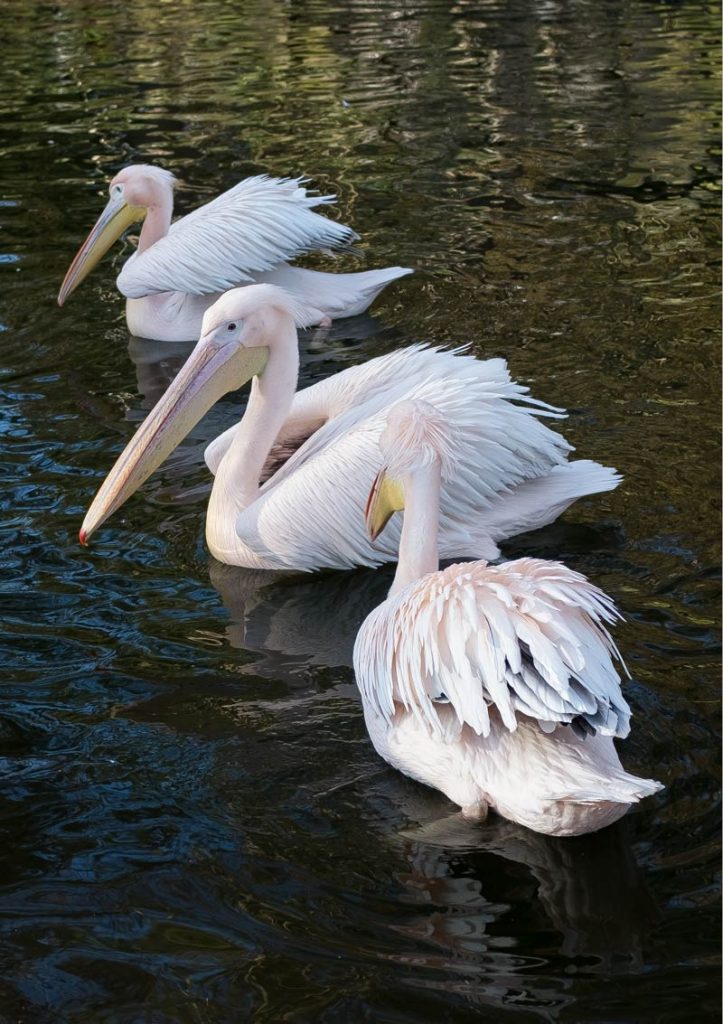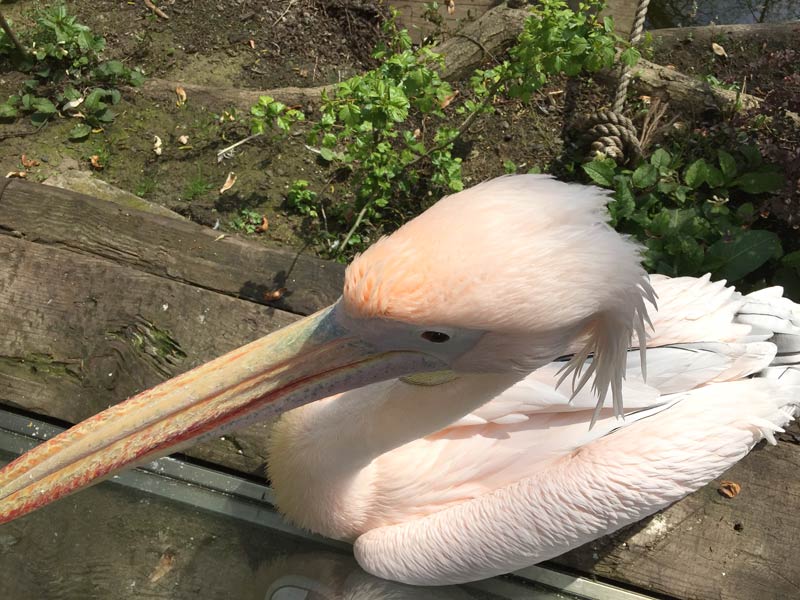

Inside The Beak Of A Pelican
At the zoo a month ago, we watched the pelicans. It’s obvious that they are very gregarious. As soon as one of them found something interesting to investigate on land, the others would follow and congregate and huddle close to one another.
The pelicans were so friendly that two of them reached up to say hello to us.
And Tamara and I had the experience of having our hands inside a pelican’s beak.
When the pelican closed its beak on my hand, the upper beak felt like being tapped gently with a thin piece of lightweight wood. It was a pleasant experience being investigated delicately by a large bird.
When the pelican closed its beak around my hand, the edge of the beak rasped against my hand as though with very tiny teeth. They were not sharp – just a faint rasp as they closed around my hand.
It was easy to understand that the tiny teeth are for draining water from its throat pouch when the pelican folds its wings, dives into the water, and rises to the surface with fish in its beak.
Because the lower beak is stretchy and translucent, light shines through it and illuminates the inside. Tamara noticed this, and soon we both experienced seeing all the way down the pelican’s throat into its gullet.
Inside the beak of a pelican is like a highway illuminated by yellow light.
Here’s Dixon Lanier Merritt’s limerick that, with several variations over the years, often springs to mind when discussing or thinking about pelicans:
A wonderful bird is the pelican,
His bill will hold more than his belican,
He can take in his beak
Enough food for a week,
But I’m damned if I see how the helican.